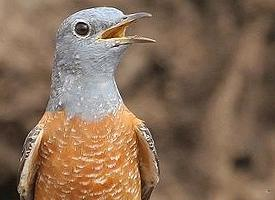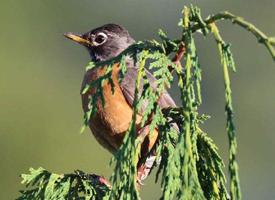
Poids et mesures
| Longueur | de 26 à 28 cm |
|---|---|
| Poids | de 95 à 140 g |
Description de l'animal
The Mistle Thrush (Turdus viscivorus) is a striking bird species belonging to the thrush family, Turdidae, known for its robust size, melodious song, and distinctive feeding habits. This bird is native to much of Europe and Asia, with its range extending from Ireland and the United Kingdom in the west, across temperate regions of Europe and into parts of Asia, including Siberia and northern Iran. It is a resident bird in many parts of its range, although northern populations may migrate southwards during the colder months.Adult Mistle Thrushes are large and powerfully built thrushes, measuring approximately 26 to 29 cm in length, with a wingspan of 42 to 48 cm, and weighing between 100 to 140 grams. They exhibit a pale gray-brown back and wings, with a white underbelly adorned with bold, round black spots. The breast and flanks are also marked with these distinctive spots, which are a key identifier of the species. The bird's head is proportionally large, with a strong, pointed bill that is yellowish at the base, becoming darker towards the tip. Its legs are sturdy and pinkish-brown in color, and its tail is long and often held upright.
One of the most remarkable features of the Mistle Thrush is its song. The male's song is loud, clear, and fluting, consisting of repeated phrases that carry for long distances, often sung from a high perch. This song is particularly notable during the early spring, serving as a territorial call and a means of attracting a mate. The Mistle Thrush is also known to sing after rainstorms, earning it the nickname "stormcock" in some regions.
Mistle Thrushes are omnivorous, with a diet that varies seasonally. They feed on a wide range of invertebrates, including earthworms, snails, and insects, during the warmer months. In the autumn and winter, their diet shifts to include a significant proportion of berries and small fruits. They are particularly associated with mistletoe berries, from which the species derives its common name. The birds play an important role in the dispersal of mistletoe seeds through their droppings, after consuming the berries.
Breeding season for the Mistle Thrush begins in early spring. The species is monogamous, with pairs often staying together throughout the year. The female builds a bulky cup-shaped nest in a tree or large bush, using grass, moss, and mud. She lays a clutch of 3 to 5 eggs, which are incubated for about 13 to 14 days. The chicks are altricial, born blind and featherless, and require intensive care from both parents. They fledge approximately 14 to 16 days after hatching but remain dependent on their parents for food for several more weeks.
The Mistle Thrush is known for its bold defense of feeding territories, particularly in winter when food sources can be scarce. It will aggressively chase away other birds, including members of its own species and larger birds, to protect its access to berry-laden bushes and trees.
In terms of conservation status, the Mistle Thrush is currently classified as Least Concern by the International Union for Conservation of Nature (IUCN), indicating that it is not currently at risk of widespread decline. However, like many bird species, it faces threats from habitat loss, changes in agricultural practices, and pesticide use, which can affect its food sources and nesting sites. Conservation efforts focused on preserving natural habitats and promoting biodiversity are essential to ensuring the long-term survival of this and other bird species.
Animaux similaires
Nouvelles photos d'animaux
Top 10 des animaux
- Dolphin gull (Leucophaeus scoresbii)
- Japanese macaque (Macaca fuscata)
- Stone loach (Barbatula barbatula)
- Greek tortoise (Testudo graeca)
- Russian tortoise (Testudo horsfieldii)
- Galápagos tortoise (Geochelone nigra complex)
- Diana monkey (Cercopithecus diana)
- Moustached guenon (Cercopithecus cephus)
- Common flying dragon (Draco volans)
- Galápagos penguin (Spheniscus mendiculus)


